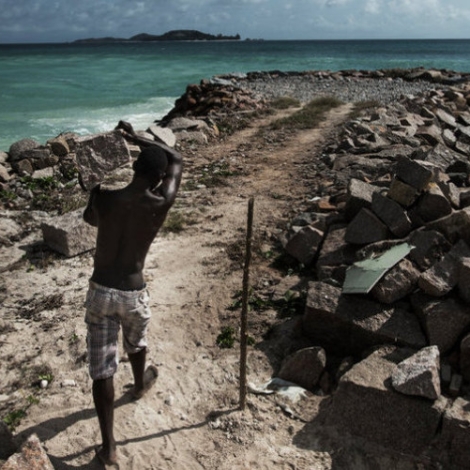Two stark messages announced at the United Nations Climate Change Conference COP27 underlined the middling progress the world has made in reducing greenhouse gas emissions. Scientists argued that climate change adaptation measures have a limit in their efficacy, and that global commitments to reduce emissions will not succeed in restricting the temperature increase to 1.5 degrees Celsius above pre-industrial levels.
Against that backdrop, global leaders agreed to establish a fund to compensate vulnerable nations for loss and damage linked to climate change disasters, and agreed on a plan for a global transformation to a low-carbon economy.
“This outcome moves us forward,” Simon Stiell, UN Climate Change Executive Secretary, said in a statement. “We have determined a way forward on a decades-long conversation on funding for loss and damage – deliberating over how we address the impacts on communities whose lives and livelihoods have been ruined by the very worst impacts of climate change.”
The loss and damages fund is part of a package of decisions that once again promise to restrain the increase in the global average temperature to 1.5 degrees Celsius above pre-industrial levels.
The fund and package of agreements may be of interest to professionals in engineering global development. Nations promised to increase their efforts to cut emissions and adapt to the inevitable impacts of climate change. The agreements also call for greater emphasis on technology and capacity building in low- and middle-income countries.
Adaptation promises and limitations
Governments at COP27 pledged more than (USD) $230 million to the Adaptation Fund and agreed on a path to meet the Global Goal on Adaptation. The goal will inform the first Global Stocktake, improving resilience amongst the most vulnerable. The money pledged is destined for vulnerable communities as they adapt to climate change through ‘concrete adaptation solutions,’ organizers said in a statement.
Adaptation may not be enough, however. Days before the funding pledges were made, scientists representing Future Earth, The Earth League and World Climate Research Programme (WCRP) delivered a report outlining the limits of adaptation plans. The report, 10 New Insights in Climate Science, warned that rising sea levels capable of submerging coastal communities and extreme heat intolerable to the human body are examples of ‘hard’ limits to our ability to adapt. The report also predicts that, by 2050, 3 billion people will live in ‘vulnerability hotspots’ with the highest risk of climate-driven disasters.
which are areas with the highest susceptibility to being adversely affected by climate-driven hazards – by 2050, double what it is today.
Moving past the limits of adaptation, COP27 agreed on the Sharm el-Sheikh Implementation Plan. The plan puts a price on the global transformation to a low-carbon economy: at least (USD) $4-6 trillion each year.
Not enough
Steep investments will be necessary to rein in the global temperature rise. At the start of the climate conference, UN Climate Change issued a report showing that the world is flattening the curve of global greenhouse gas emissions, but not by enough to limit global temperature rise to 1.5 degrees Celsius by the end of the century.
According to the report, the combined climate pledges of 193 Parties under the Paris Agreement could put the world on track for around 2.5 degrees Celsius of warming by the end of the century.
“We are still nowhere near the scale and pace of emission reductions required to put us on track toward a 1.5 degrees Celsius world. To keep this goal alive, national governments need to strengthen their climate action plans now and implement them in the next eight years,” Mr. Stiell says.

